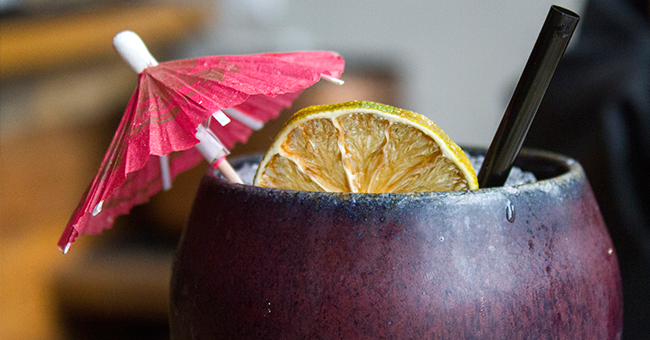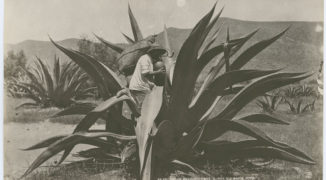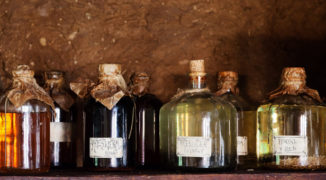Few things are quite as memorable as your first cocktail umbrella. Mine happened at a Chinese restaurant on a Shirley Temple when I was six or seven. Up to that point, the type of drink that came with an umbrella was a lavish treat. As you might expect, as an adult, I’ve come to love tiki drinks for the same reasons: each cocktail is a production, complete with elaborate, colorful garnishes. Even though it’s been years, each tiny umbrella still feels like a tiny extravagance.
Like the drinks they garnish, cocktail umbrellas are colorful, playful and historically ambiguous. Their background, as with most of cocktail history, is a mash of recorded fact, speculation and mythology. It’s very likely that they originated in China, says cocktail historian Dale DeGroff. Decorative paper parasols have existed in the historical record since 22 AD, making them ancient as well as beautiful.
But how the cocktail umbrella came to be synonymous with the faux-Polynesian drinks movement we know as tiki is even more vague.
Under the umbrella
Some believe that soldiers stationed in the South Pacific may have brought them back to the U.S. One story that jives with this narrative comes from tiki drink historian and owner of Latitude 29 Jeff “Beachbum” Berry. Last year, he told Bon Appétit that “A bartender named Harry Yee at the Hilton Waikiki was the first. He used to garnish his cocktails with a stick of sugarcane, but that was at the time that everybody was still smoking cigarettes. After they chewed on the sugarcane, they’d set it in the ashtrays, and he would have to scrub them clean. So he came up with something new.” Yee’s use of tiny umbrellas is cited as starting in 1959.
But others have different ideas. According to DeGroff, Donn Beach, founder of semi-defunct restaurant and bar chain Don the Beachcomber, is likely to have started the cocktail umbrella trend around 1932. “I don’t think it had a life before the tiki cocktail,” he says. “In my mind, [Donn Beach] really created the whole tiki movement. He was the one who sold Victor Bergeron, Trader Vic, all of his stuff when Victor Bergeron wanted to get involved in the tiki world. He’d been collecting all this stuff in the South Pacific after several trips around the world.”
This theory corroborates that of Victor “Trader Vic” Bergeron’s son, Joe. According to Joe, the Trader Vic chain used cocktail umbrellas until World War II interrupted the supply chain. Just as Bergeron bought his decorations from Beach, he also may have borrowed the garniture idea.
However, there is some overlap. After World War II and a divorce, Donn Beach legged it to Hawaii and opened Don’s Polynesian Village in Waikiki, meaning that he and Yee may have encountered each other. With that said, it’s also possible that Yee and Beach came up with the idea independently.
Throwing shade
As with most aspects of cocktail lore, the exact purpose of the umbrella is lost to history. Some creative bartenders have claimed they prevent ice from melting too quickly by shading the drink from the sun’s rays. Not so, says DeGroff. “They’re probably [mostly] decorative. The big paper umbrellas were sunscreens, but the little ones were decorative.”
Others have claimed that the original tiki chains used the garnishes to get more women into bars. This one is more difficult to verify, because who can argue with a beautiful garnish?
Regardless of what you believe its purpose to be, the cocktail umbrella is here to stay. Next time you stroll up to the bar, order your tiki drink with pride, and embrace the tiny thrill of the tiny umbrella that comes with it.





